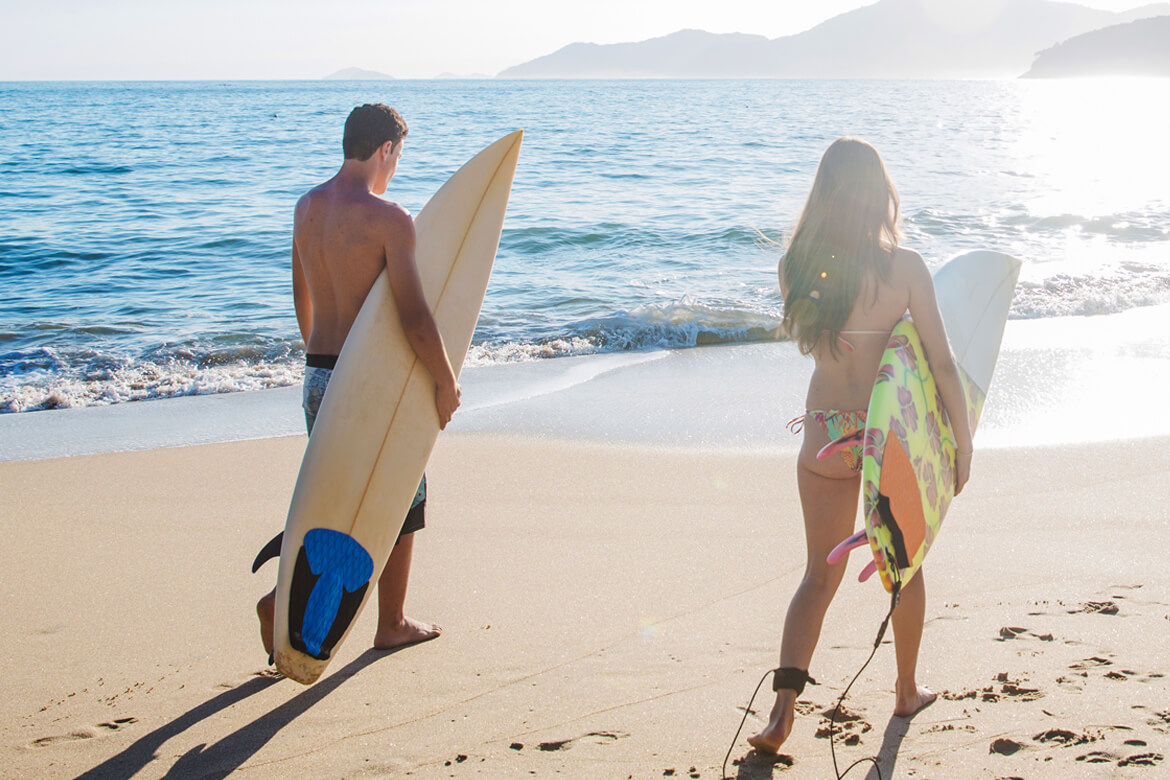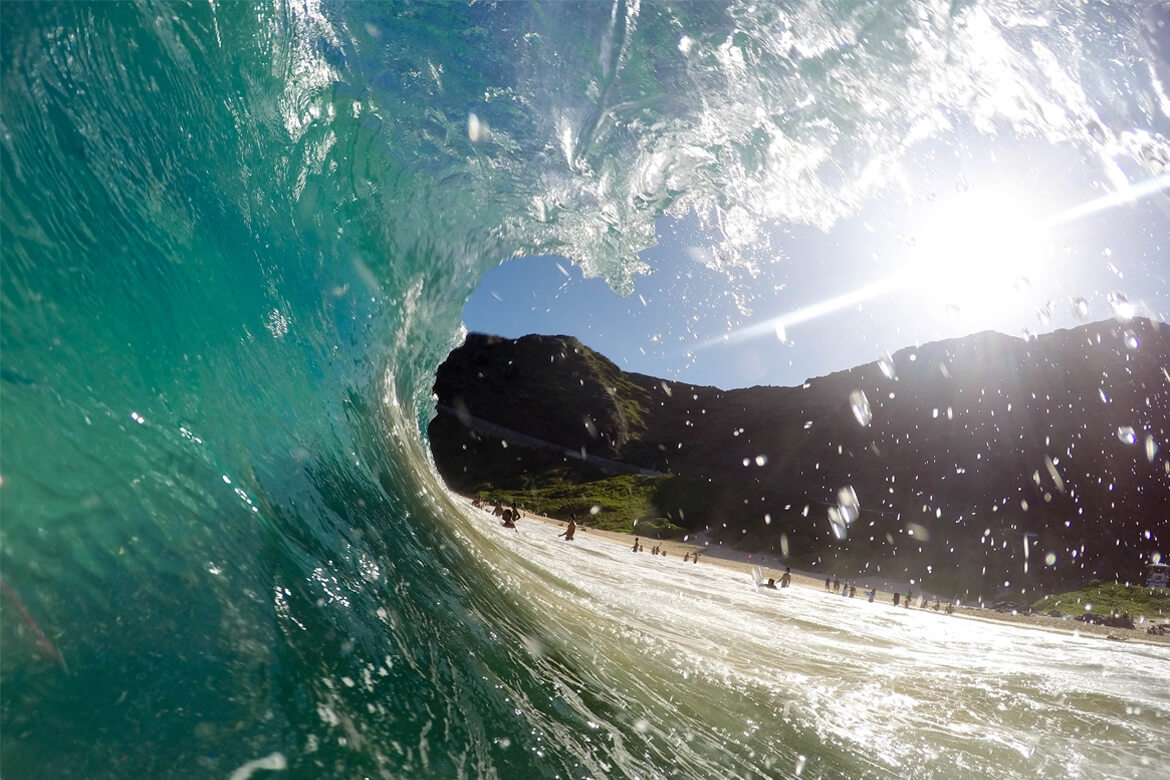Riding the Waves of Respect: A Guide to Surf Etiquette and Safety
The ocean’s power and beauty beckon surfers from all walks of life. But before diving into this exhilarating world, understanding surf etiquette and safety is crucial. Not only will it make your experience more enjoyable, but it will also ensure the well-being of yourself and others sharing the waves. This guide equips you with the knowledge to navigate the lineup with respect, ride with confidence, and return to shore with a smile.
Respecting the Hierarchy: The Golden Rules of Etiquette
Imagine the lineup as an unspoken social gathering. Just like any social setting, respecting others is key. Here are the golden rules of surf etiquette:
- Right of Way: The surfer closest to the peak (the breaking part of the wave) has priority. This ensures everyone gets a fair chance and avoids collisions. Observe the lineup, paddle strategically, and wait patiently for your turn.
- No Snaking: Don’t paddle around someone closer to the peak to catch a wave. It’s disrespectful and dangerous. If you’re unsure, communicate and clarify who has priority.
- Paddle Wide: Avoid paddling through the peak, where surfers are waiting for waves. Opt for a wider path, respecting the lineup and minimizing interference.
- Don’t Drop In: Once a surfer is on the wave, don’t attempt to catch the same wave. Let them enjoy their ride, and wait for the next one.
- Communicate: Use simple calls like “left” or “right” to avoid confusion when multiple surfers are paddling for the same wave.
- Share the Waves: If conditions allow, consider taking turns with others, especially beginners. Remember, everyone is there to have fun!
- Respect Locals: When surfing at a new spot, observe how things are done and show respect to locals who know the waves best.
- Help Others: If you see someone in trouble, offer assistance or alert lifeguards immediately.
- Leave No Trace: Respect the beach and ocean by disposing of trash properly and avoiding damage to the environment.
- Be Humble: We all wipe out and make mistakes. Be courteous, apologize when necessary, and learn from your experiences.
Safety First: Essential Tips for a Smooth Ride
Surfing is inherently thrilling, but it also demands responsible behavior. Prioritize safety with these essential tips:
- Know Your Limits: Be honest about your skill level and choose waves that match your ability. Don’t overestimate yourself and risk getting into dangerous situations.
- Surf with a Buddy: Especially when venturing into unfamiliar territory, having a friend nearby can significantly increase your safety.
- Check the Conditions: Familiarize yourself with the tide, wind, swell size, and rip currents before entering the water.
- Never Surf Alone: If surfing solo is unavoidable, inform someone on land about your location and planned return time.
- Always Wear a Leash: Leashes prevent runaway boards from injuring yourself or others. Choose the right leash length and type for your board and conditions.
- Respect Lifeguards: Obey lifeguard instructions and stay within designated swimming areas, especially if you’re a beginner.
- Warm Up and Stretch: Prepare your body with dynamic stretches before entering the water to prevent injuries.
- Be Aware of Your Surroundings: Keep an eye on other surfers, rocks, and obstacles to avoid collisions.
- Learn Basic Water Safety: Know how to swim, tread water, and escape rip currents. Consider taking a surf safety course.
- Don’t Push Your Limits: If you feel tired, cold, or unsafe, get out of the water and rest. It’s better to be safe than sorry.
Beyond the Basics: Cultivating a Positive Surf Community
Surf etiquette and safety go beyond written rules. They’re about fostering a positive and respectful atmosphere in the water. Here are some additional tips:
- Be positive and friendly: A smile and a friendly hello go a long way in creating a welcoming environment.
- Offer encouragement: Cheer on others riding waves and celebrate their successes.
- Be patient and understanding: We all have different skill levels and make mistakes. Be patient with beginners and understanding of others’ mistakes.
- Give back to the community: Participate in beach cleanups, support local surf shops, and advocate for ocean conservation.
Remember, the ocean is a shared space. By following these guidelines and embracing a positive attitude, you can contribute to a safe, enjoyable, and respectful surfing experience for everyone. So, paddle out with confidence, ride with respect, and leave the ocean a little better than you found it.
Read MoreUnraveling the Mystery: How a Wave is Born
Waves have captivated humanity for millennia, their mesmerizing dance a constant presence on our watery frontiers. But have you ever stopped to wonder, what breathes life into these undulating giants? What unseen forces orchestrate their graceful rise and fall? Today, we delve into the fascinating science behind wave creation, exploring the various players in this aquatic ballet.
The Wind, the Maestro:
In most cases, the wind acts as the primary conductor of the wave orchestra. As it sweeps across the water’s surface, its energy doesn’t simply push the water molecules forward. Instead, it creates friction, transferring its energy in a complex dance. This energy causes some water molecules to rise, forming the characteristic crest of the wave, while others are pushed down, forming the trough. However, it’s crucial to remember that the water molecules themselves don’t travel with the wave; they only bob up and down in their designated spots. It’s the energy that propagates forward, creating the illusion of moving water.
The Wind’s Symphony:
The characteristics of the waves are heavily influenced by the wind’s strength, duration, and fetch. Stronger winds transfer more energy, resulting in higher waves. Longer wind durations allow the waves to grow in size as they travel. And finally, the fetch, the distance over which the wind blows uninterrupted, plays a crucial role in determining the wavelength (distance between two crests) and wave period (time between two successive crests). Long fetches allow waves to grow larger and more organized.
Beyond the Wind’s Sway:
While wind reigns supreme in most cases, other forces can also stir the watery masses. Underwater earthquakes and landslides can generate powerful tsunamis, displacing vast amounts of water and unleashing devastating waves. Gravitational forces play a role in tidal waves, although their impact is often masked by the larger wind-driven waves. Even smaller players like boats churning through water or splashing rocks can create ripples, albeit on a much smaller scale.
The Journey of a Wave:
As waves travel across vast distances, they are shaped by various factors. Ocean currents can bend and steer them, while changes in water depth can cause them to refract (bend), diffract (spread out), or even break (crash onto the shore). The seafloor topography, with its underwater mountains and valleys, further sculpts the waves, leading to the diverse wave patterns we observe on beaches.
From Ocean Depths to Sandy Shores:
As waves approach shallower water near the shore, their behavior changes dramatically. Their speed slows down due to the increasing interaction with the seabed, while their wavelength shortens and their height grows. Eventually, the leading edge of the wave becomes too steep to sustain itself, and it breaks, cascading onto the beach in a spectacular display of energy release.
The Everlasting Dance:
Understanding wave creation isn’t just about appreciating their beauty; it’s crucial for predicting coastal hazards, designing safe harbors, and understanding the complex interaction between wind, water, and our planet’s climate. From surfers riding their crests to scientists studying their secrets, waves continue to captivate and inspire us, reminding us of the ever-dynamic and interconnected nature of our world.
Beyond 1500 Words:
This blog scratches the surface of the fascinating world of wave creation. If you’re curious to delve deeper, consider exploring these topics:
- Different types of waves: wind waves, swell, tsunamis, tidal waves, internal waves.
- The physics of wave motion: energy transfer, wave dispersion, refraction, diffraction.
- The impact of waves on our planet: coastal erosion, wave energy as a renewable resource.
So, the next time you stand mesmerized by the rhythmic crash of waves against the shore, remember the intricate dance of wind, water, and gravity that brought them to life. The understanding of these hidden forces adds a whole new layer of appreciation to the ocean’s eternal and captivating performance.
Read MoreHow to Pick the Right Board for You
Before taking surf lessons in San Diego it is important to understand that the more than 70 miles of coastline in the county can be divided into three distinct areas: the North County coastal region, the central coast, and the South Bay coast. Each has its own well-known beaches and breaks that offer unique experiences for surfers of all abilities. The North County coastal region stretches from Del Mar up to Trestles. The majority of the beaches are south or southwest facing and spots like Swami’s, Tabletops, Lower, and Oceanside Harbor benefit from off-shore reefs, river mouths, and man-made jetties which allow for incredible breaks.
These beaches are especially popular when a south swell comes in and combines with an offshore Santa Ana wind.The central coast, stretching from Point Loma to Torrey Pines offers the most diversity in its breaks. For example, you may want to head out to the jetties in South Mission or Ocean Beach where fast walls benefit those with short boards and better agility. Long waves at Tourmaline provide a slower ride for longboarders while the rocky coast at Sunset Cliffs and La Jolla have numerous right and left breaks that make good surf possible during swells of different directions, tidal conditions, and sizes. Those looking for bigger waves can head out toward the submarine canyons at Black’s Beach for big winter waves.

San Diego Surf Spots
The South Bay, from Imperial Beach north to Coronado, is another area worth checking out after you’ve taken San Diego surf classes. The low sand beaches in this area can have formless waves which can be blown out by onshore wind, but when the surf is good it can be amazing. This is especially true in the south-facing north end of Coronado during the summer months.
Your Best Summer
Of course, finding the best surf spot is a matter of personal opinion. There are plenty of other breaks to choose from and some are far more crowded than others. Visit as many as you can and talk it over with more experienced friends to find your favorite. Be sure to also check the surf report before heading out to find out the direction of the swells and the times of high and low tide, as these factors can greatly affect the surf. Before long you will have a handful of favorite San Diego surf spots of your own. To sign up for surf lessons contact Pacific Surf today.
Foam is your friend. Don’t be scared of it. A little bit of extra foam here and there is good for the soul, and your surfing

Surf Lessons in San Diego
Surf wax is important to any surfer. After all, it’s what prevents you from slipping and falling off of your board. It’s the surf wax that provides traction and grip on the board, without which all of the surf lessons in San Diego wouldn’t help you catch a wave. Knowing how to apply surf wax in the right way could make the difference between catching the wave of your dreams or experiencing a heart-breaking wipeout. The first thing you should learn about wax as a part of your San Diego surf lessons is the difference between the distinct grades of surf wax.
Read MoreFrontside Tuberide Like Bob Machado
Before taking surf lessons in San Diego it is important to understand that the more than 70 miles of coastline in the county can be divided into three distinct areas: the North County coastal region, the central coast, and the South Bay coast. Each has its own well-known beaches and breaks that offer unique experiences for surfers of all abilities…
Read MoreFoam is your friend. Don't be scared of it. A little bit of extra foam here and there is good for the soul, and your surfing
The greatest training for surfing is…well, surfing. But prepping your body for the incredibly unique movements your body goes through from paddling, to getting on your feet, to riding down the line and going above the lip takes more than simply riding waves every day…
Read MorePerfect Music for Surfing
Etiam ultrices. Suspendisse in justo eu magna luctus suscipit. Sed lectus. Integer euismod lacus luctus magna. Quisque cursus, metus vitae pharetra auctor, sem massa mattis sem, at interdum magna augue eget diam. Vestibulum ante ipsum primis in faucibus orci luctus et ultrices posuere cubilia Curae; Morbi lacinia molestie dui. Praesent blandit dolor. Sed non quam. In vel mi sit amet augue congue elementum.
Read MorePost With Video
To be able to surf you only need a surfboard and some waves, right? Yeah, this is somewhat right, but the reality is that you will need come accessories to be safe in the water, as well as the other people around you. Leashes and fins are necessary, while nose guards are optional, but you should also use them…
Read More



